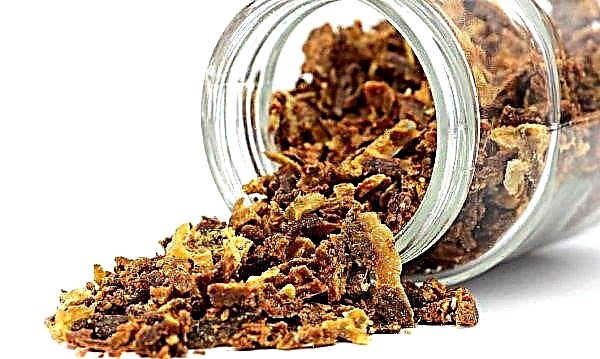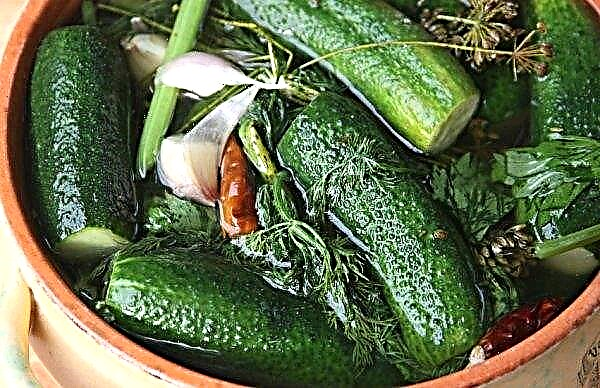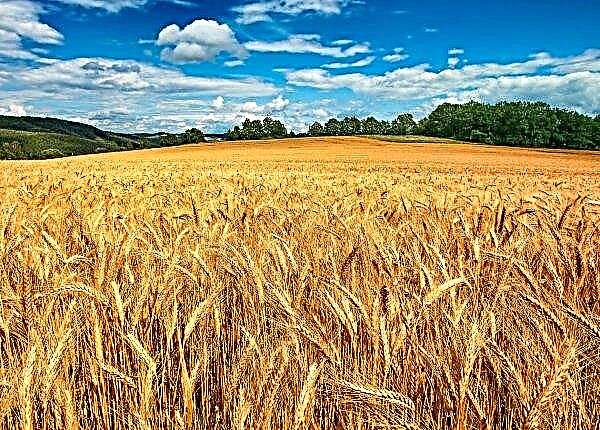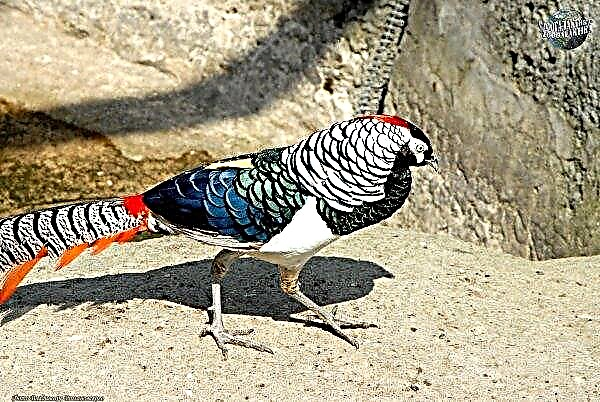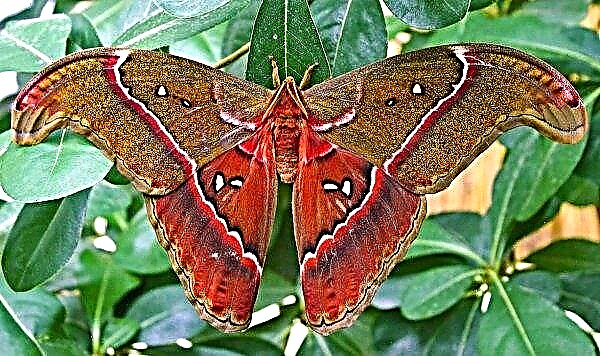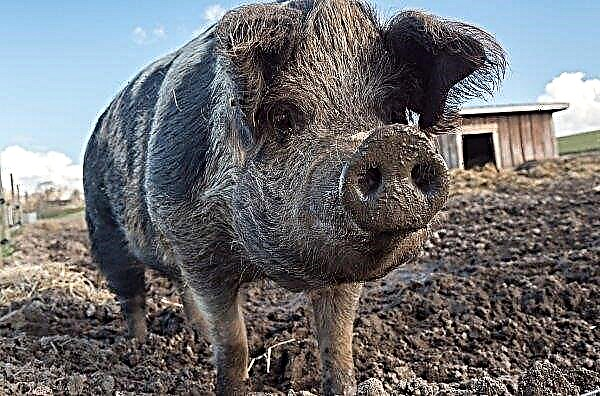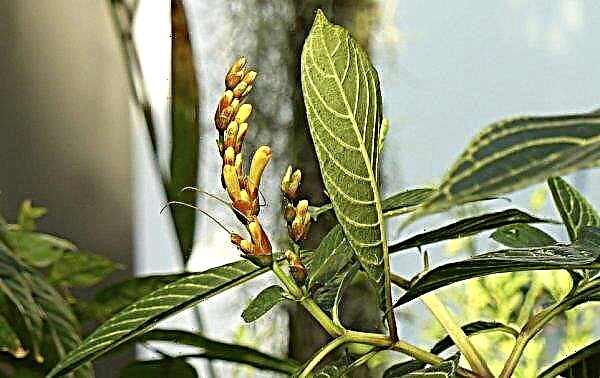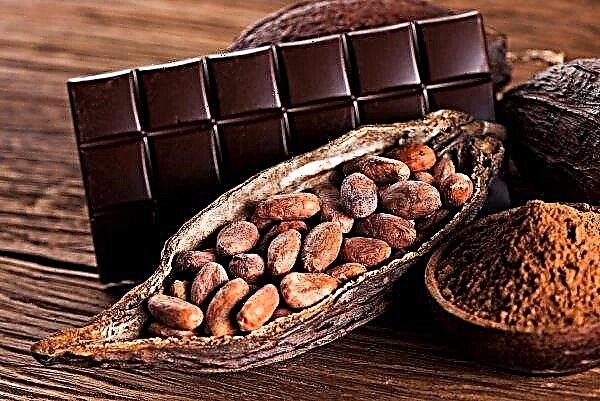Argyroderma refers to the succulents brought to us from South Africa. This plant looks similar to other representatives of the Aichrison family - Lithops, Konophytum, Dinterantus, growing in the same regions and similar to living stones. We learn about the features and types of Argyroderma, the optimal conditions for their successful cultivation, how to care for and propagate them.
Argyroderma: features of a houseplant
The main differences of Argyroderma from other “living stones” are their ability to plunge into the ground during hot weather and a light, almost white color that protects the plant from sunburn and overheating. It grows in small groups up to 10 pieces.
Each plant consists of 2 or 4 fleshy leaves with a diameter of not more than 3 cm, which are densely fused. Its height usually does not exceed 5 cm. In shape, the leaves resemble a semicircle. Young leaves grow from the center, while the old ones dry out. The flower stalk also appears from the center and blooms with a single flower of white, pinkish or yellow color, similar to a daisy.
Under natural conditions, this succulent blooms in late spring, and in indoor conditions in autumn or early winter. Typically, the flower blooms in the evening, and closes again at night. After cross-pollination, the fruit-box in the form of a capsule with seeds ripens. Its size is about 12 mm, and inside there are seeds. The box opens itself if it is lowered into the water.
Did you know? The Aiza family, to which the genus Argyroderm belongs, has, according to recent data, 146 genera and 2271 species. Many among them are succulents.
Types of Argyroderma
In nature, this plant is very variable. Now only 11 species of this genus have been isolated. Distribution among fans of succulents received the following types of Argyroderm:
- Cup-shaped. Succulent miniature size with leaves up to 2 cm. It produces a yellow flower with white stamens in the middle.

- Testicular. Dots are visible on light-colored sheets of this species. A large (up to 4 cm) flower has a pink color.

- Daelt. It features beautiful flowers of various colors. They have white, purple, red and orange colors.

- Oval. Fleshy sheets have gray-green tones. The flower of this species may be white, yellow or pink.

- Schuldt. Leaves with bluish tones form a V-shaped gap inside. It blooms in purple or yellow.
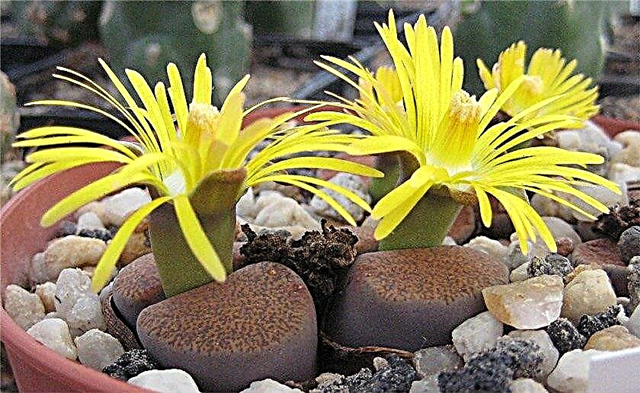
- Pearson. It has a flower of bright pink color and gray-green color of paired leaves.
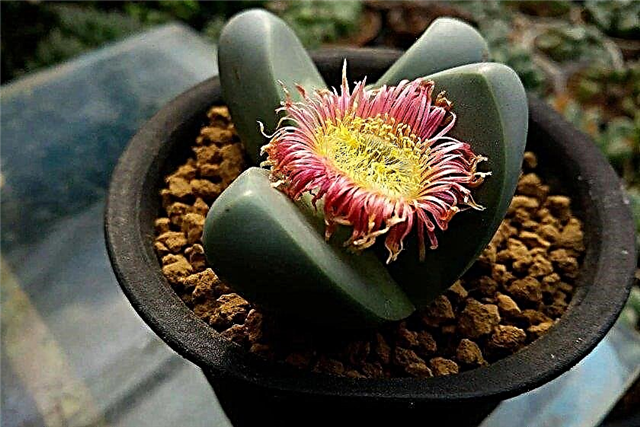
- Whitish. This plant with whitish leaves grows up to 8 cm and blooms with bright purple flowers.

- Patens. Succulent with gray-green leaves and a flower of lemon color. The size of the flower reaches 5 cm.
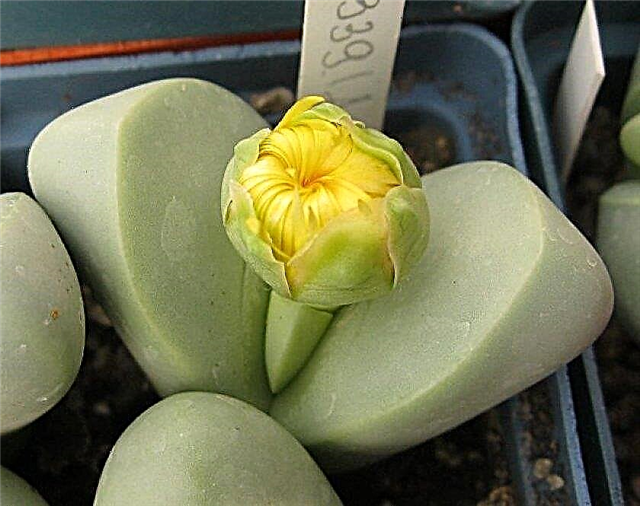
Conditions for growing in the house
Argyroderma in the room can create optimal conditions.
What kind of lighting is needed for the plant
Argiroderma needs good lighting all year round. Therefore, a pot with this succulent is best placed on window sills on the south side and illuminated in the winter. In the summer heat, when the sun is active, the plant should be shaded from its direct rays, since in the pot it will not be able to dig into the substrate, as it does in natural conditions. With a lack of lighting, you can not wait for the flowering of this succulent.
Important! Under the condition of shading from the sun, the Argyroderma is able to tolerate high temperature, but the pot and roots should not be allowed to overheat. In winter, the temperature for it should not fall below + 8ºC.
Requirements for temperature and humidity
The optimal temperature regime in the active period of growth and development is + 24 ... + 26ºC. In the cold period of rest, the temperature is reduced to + 12 ... + 15ºC. This indoor plant prefers dry air and does not need to be sprayed.
What should be the substrate for the plant
The substrate for Argyroderma should pass water and air well. Well suited for cactus soil or a mixture of garden soil, sand and the addition of gravel or brick chips. You can make a mixture of 2 parts of sod-leaf soil and 3 parts of sand. Homemade mixtures must be steamed or calcined in the oven. Their reaction should be slightly acidic (5–6 pH).
You can make a mixture of 2 parts of sod-leaf soil and 3 parts of sand. Homemade mixtures must be steamed or calcined in the oven. Their reaction should be slightly acidic (5–6 pH).
How to care for Argyroderma at home
It is necessary to establish proper care for this succulent - it is simple.
Features of watering
Watering is recommended only during the period of active growth and development as necessary. The soil between moisture should dry completely. In the dormant period (from October to April), watering is stopped completely. Humidification is advised to be carried out through a pallet. To do this, use well-maintained and not cold water. Filtered water at room temperature is well suited. It is poured into a tray, then a pot is placed, and after a while, the excess liquid is drained.
Important! When watering, it should be borne in mind that Argyroderma is drought-resistant, and does not tolerate excessive waterlogging. This can lead to decay of the roots of the succulents and its death.
Plant nutrition
It is necessary to feed the plant only during budding and flowering. Fertilizers of mineral origin for cacti and succulents, which can be purchased at any garden store, are well suited for this purpose. It is made once a month.
Transfer
The plant, as it grows, is transplanted into a new container about once every 3 years. The transplant is carried out in the spring before activating plant growth. The pot for these purposes is chosen wide enough and not very deep. It must have a drain hole.

At the bottom of the pot should be placed a drainage layer of expanded clay or pebbles. Soil can also be prepared independently. To do this, mix 1 part of turf soil, 1 part of sand and 1/2 part of pebbles or brick chips. After transplanting, it is advisable not to water the succulent week, to give time to dry the wounds on the roots obtained during the transplant.
Reproduction of Argyroderma
Succulent is propagated by seed and by dividing the bush.
Seeds
Seed is sown in spring, usually in March. In a prepared container with soil mixture, seeds are sown on the surface at a distance of 5 mm from each other. Planting is covered with a bag of polyethylene to create a greenhouse effect. The optimum temperature for seed germination is +24 ... + 26ºC. Every day, the package is removed for 10-15 minutes for ventilation. The soil is periodically moistened.
The first shoots appear after 1-1.5 months. Every day the film is removed for a couple of minutes for airing. Then the time of its removal is increased and after 2 months completely removed. When the sprouts grow up, they are planted in separate containers. This is usually done in a year. The first flowering occurs only after 3-4 years.
Division
When the Argyroderma grows well, the division method can be used for reproduction. The plant gives shoots that can be carefully separated and planted in a separate pot with prepared soil.

Growing difficulties
Argyroderma is a fairly resistant indoor flower to many diseases and diseases. It should be noted that this succulent does not like overflows. They can cause rot. In this case, watering should be reduced and fungicidal preparations such as "Fundazole" should be used.
Did you know? Argyroderma is translated from Latin as “silver skin”. She was named because of the whitish color of the leaves.
When growing Argyroderma, you can also encounter the following difficulties:
- The appearance of bright spots on the leaves. It occurs due to burns from direct rays of the sun. In this case, the pot with the plant must be pritenit.
- Slow down growth and development. It is necessary to fertilize or transplant the plant. Young leaves grow, ahead of the death of older leaves. This phenomenon occurs due to earlier watering after a succulent transplant.
- The leaves become soft and acquire a darker, but dull color. This indicates overflow and excessive soil moisture. Watering should be reduced.
- Lack of flowering. This phenomenon occurs when there is a lack of lighting.

This indoor flower can be affected by such pests:
- Mealybug. Pest can be identified by cotton-like formations on the plant. To fix the problem, succulent should be cleaned with a sponge dipped in soapy water (use only household soap). Then apply the chemical preparations "Actellik" or "Actara". A good result also gives a spray of infusion of tobacco or garlic.
- Thrips. These are small dark flies. Their larvae, having a yellowish color, feed on the sap of the plant. As a result of their activities, they leave a sticky coating on the succulent. To combat such pests, insecticidal preparations such as Vermitek, Fitoverm, Intavir, as well as treatment with mustard, red pepper, and tobacco infusions, help well.
- Mushroom mosquitoes. To combat such insects, chemicals such as "Regent", "Dimilin" help well.
- Spider mite. It is detected by the appearance of yellowish blotches on the leaves, which then begin to turn yellow and wither. On the succulent, you can also notice the finest cobweb. The plant should be cleaned with soapy water, and then apply the chemicals "Actellik", "Fitoverm". Processing is carried out 2-3 times with an interval of 7-10 days.
Did you know? Argyroderma seeds can be bought at a garden store, or you can harvest them yourself using adult plant specimens. Pollination during flowering is done manually. At the same time, succulent is isolated from neighboring plants of another variety in order to maintain the purity of the variety and not to obtain a hybrid.
If you adhere to all the rules for the care and cultivation of a plant, then Argyroderma will certainly please with its unusual appearance and bloom. It is unpretentious, but requires good lighting and does not tolerate waterlogging.










